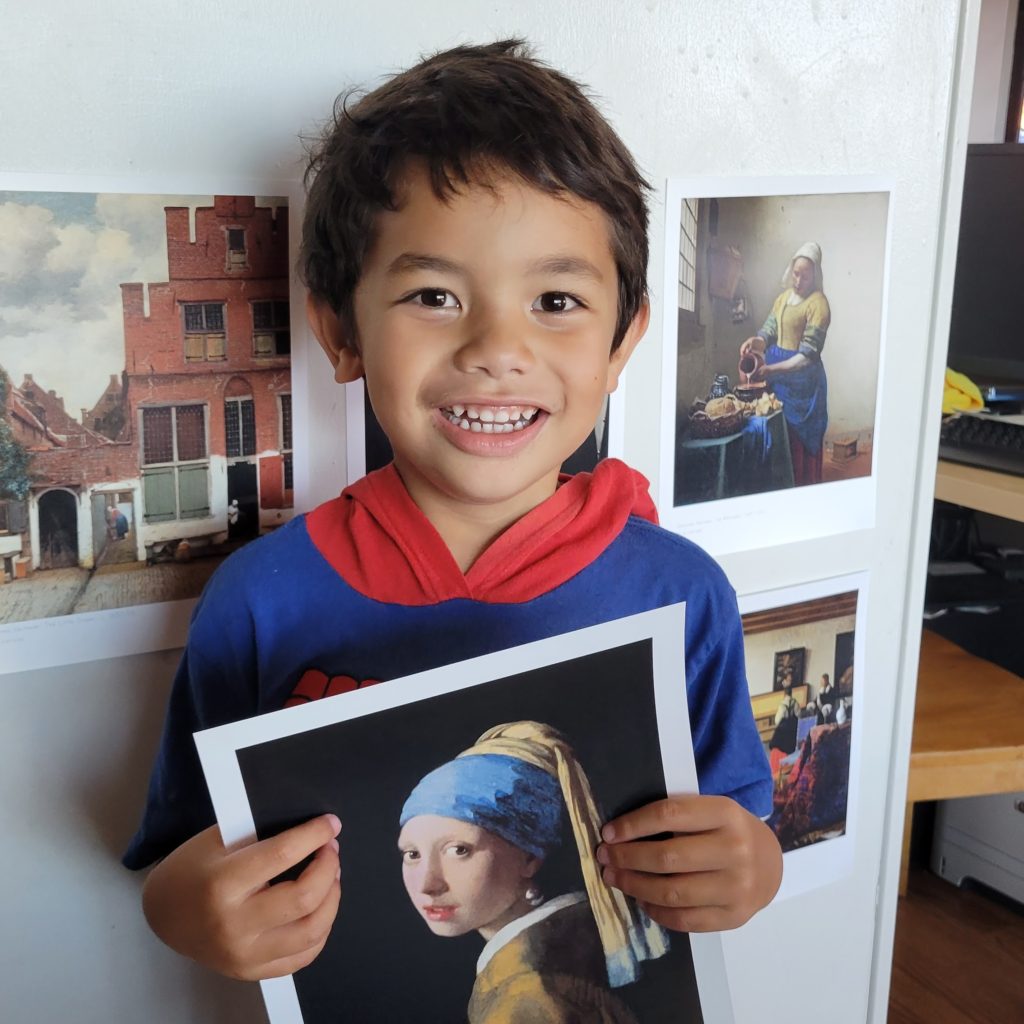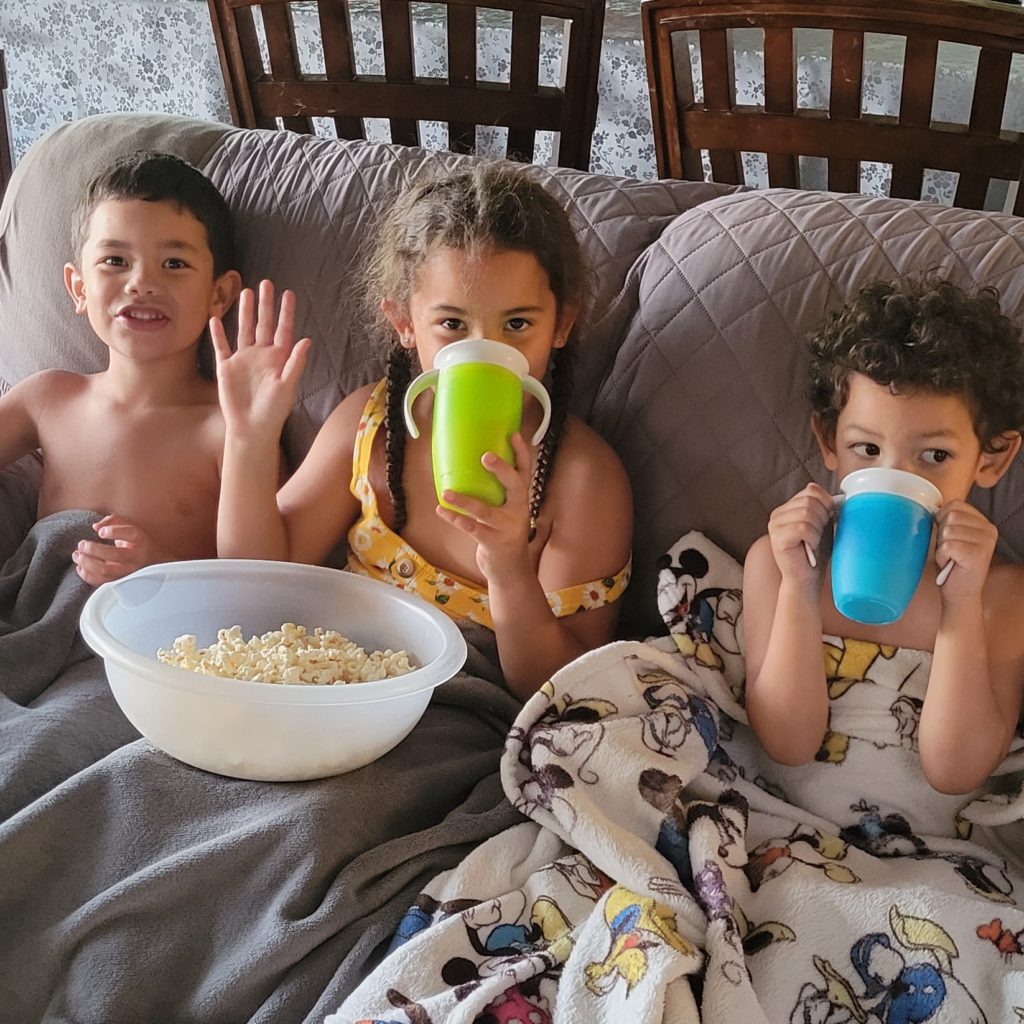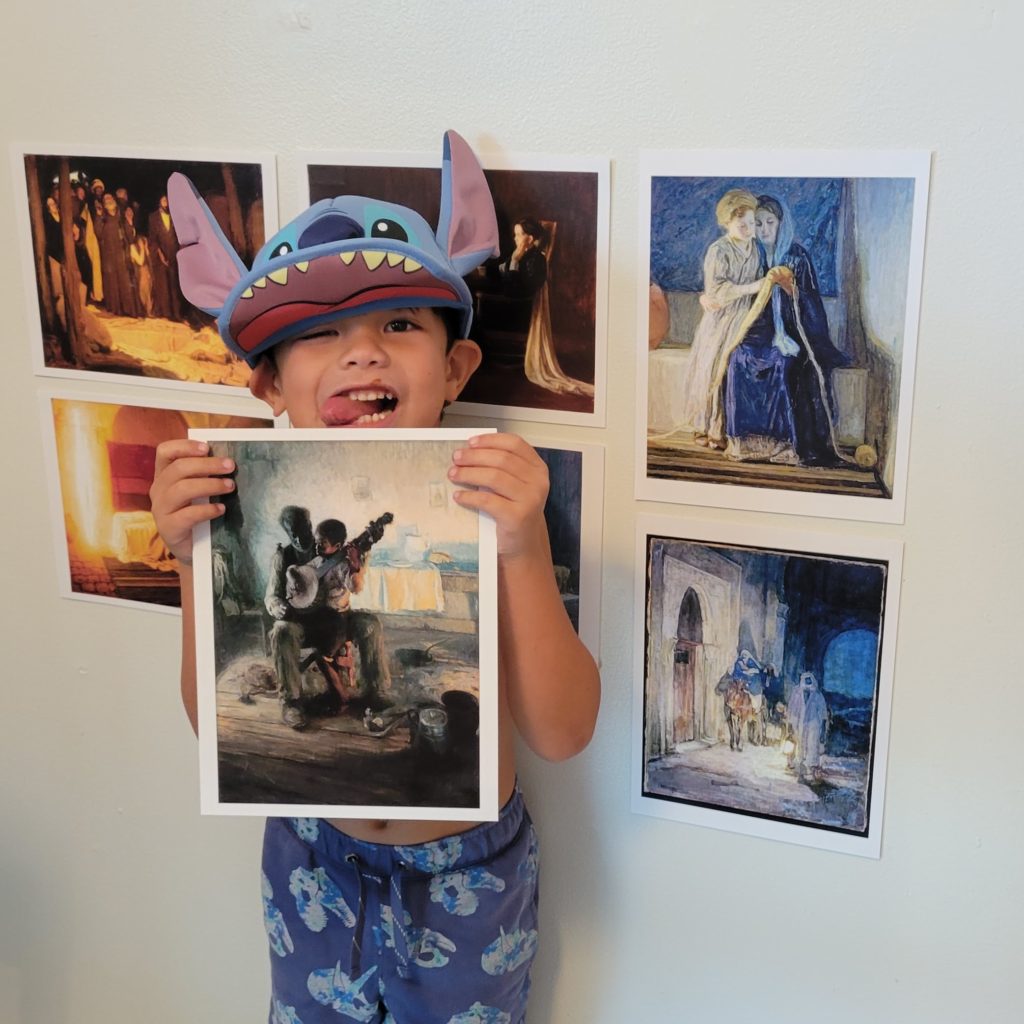When I envisioned our homeschooling journey, it went through many revisions, and it will undoubtedly continue to do so. Our first year has solidly fallen under the umbrella “Charlotte Mason with an unschooling flavor.” We have blended curricula more than I had planned, but each step was the right one for the moment. Over the course of our first year of formal lessons, we have covered the basics – reading, writing, and arithmetic. But it’s all the additional subjects that have added wonder to our lives.
We studied the artists Johannes Vermeer, Claude Monet, Henry Ossawa Tanner, and Vincent Van Gogh. Prints of the artists’ works hung on our walls for a few months at a time as we examined one work each week. While the kids each explained what they see in the prints, we talked about how those are different from the other artists we have studied. We discussed different styles of art: Baroque, Impressionism, and Post-Impressionism. We read biographies of each artist, learning about their contemporary worlds.

We also studied the composers Mozart, Tchaikovsky, and Beethoven. Our study of Mozart was exciting because it was such a new world to all of us. We used flashcards to learn the different instruments, and rather than listen to the recordings of the music, we watched orchestras on YouTube. I was so ignorant about all things classical music that I didn’t know which instruments made which sounds. It was easier to learn if we could see the instruments and hear the music. We moved to Tchaikovsky and discovered our introduction to ballet. We watched Swan Lake, the Nutcracker, and Sleeping Beauty together with popcorn and tea. Beethoven became a staple of background music while we drew, colored, and sewed.
Poetry Teatime was a struggle for me at first. I couldn’t find a way to make it beautiful or fun, so we started doing it very low key, using many of the tips and tricks described by Brave Writer. I borrowed multiple books of poetry from the library, and we read several poems out of each book each Tuesday. I light a candle at the table and let the children examine the books and illustrations before telling me which poems they want me to read. Hip Hop Speaks to Children has been particularly impactful because we can use the CD to listen to the poems. I don’t always know the rhythm with which to read the poems, so it’s helpful to have a professional do it.
Even though these experiences have been good for my kids, I think I’m the one who has learned the most from them. These were foreign worlds to me. I recognized the names of the artists (some of them at least) and the composers, but I could not have identified any of the works or pieces of music. I didn’t know what Baroque or Impressionism meant, and I had never heard of the Paris Salon. Even when I studied poetry in high school, it was intimidating. Symbolism and imagery did not come easily to me, and I was always a little confused.

One of the most important, and honestly surprising, aspects of these new subjects is that they do not require much time at all. We spend about 20 minutes a week on each subject. We spend more time with drawing and handicrafts because we work on those during our family read aloud times, about 20 minutes each day. In addition to reading aloud, drawing, and handicrafts, this is also how we put Finiasi down for a nap each afternoon, so it’s a particularly productive 20 minutes of our day. Outside of this creative time, the lessons for our classical studies take very little time investment.
Over the course of this year, I have slowly begun to notice the classical music, art, and poetry in the world around me. I started playing Vivaldi’s Four Seasons in times when I need the emotional temperature of our house to come down a few degrees. As I watch animated movies with the kids, it has been such a joy to have a greater appreciation for the art embedded in the movies. We watched Legend of the Guardians: The Owls of Ga’Hoole the other day as a family movie, and I was mesmerized by the stunning animation, a sense of wonder that would have completely gone over my head a year ago. I appreciated this even more after I read Hunt, Gather, Parent because engaging in awe is a common parenting technique in hunter-gatherer communities. In my hurried way, I had glossed over the potential sense of awe in so many ways around me.

I don’t think it’s necessary to study the classical arts to develop an appreciation for the beauty around us, although it certainly helped me. It takes the desire to slow down from the rush that we have been induced into as part of our Western culture. It requires observing our surroundings, the trees on our daily walks, the background music in the movie, and the way that the author’s chosen words in our children’s books force us to read in the correct rhythm unintentionally. God is the ultimate artist, and He designed this world to be beautiful.
But now, O Lord, you are our Father; we are the clay, and you are our potter; we are all the work of your hand.
Isaiah 64:8 ESV
So often I believed that there wasn’t time for all of this ethereal “nonsense,” but music, art, and poetry can produce a reverence for the world around us that is nearly impossible to find rushing from one event to the next, harried and stressed. Taking a moment to appreciate the beauty of this aspect of our world has added a new layer of joy to my life, and it started by entering the classics, a world entirely unknown to me until now.